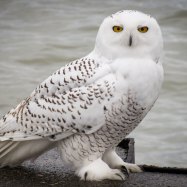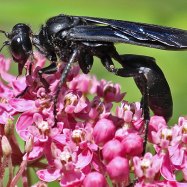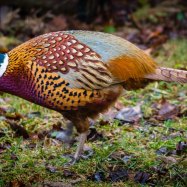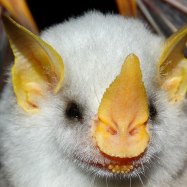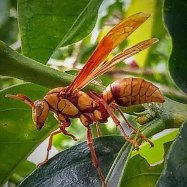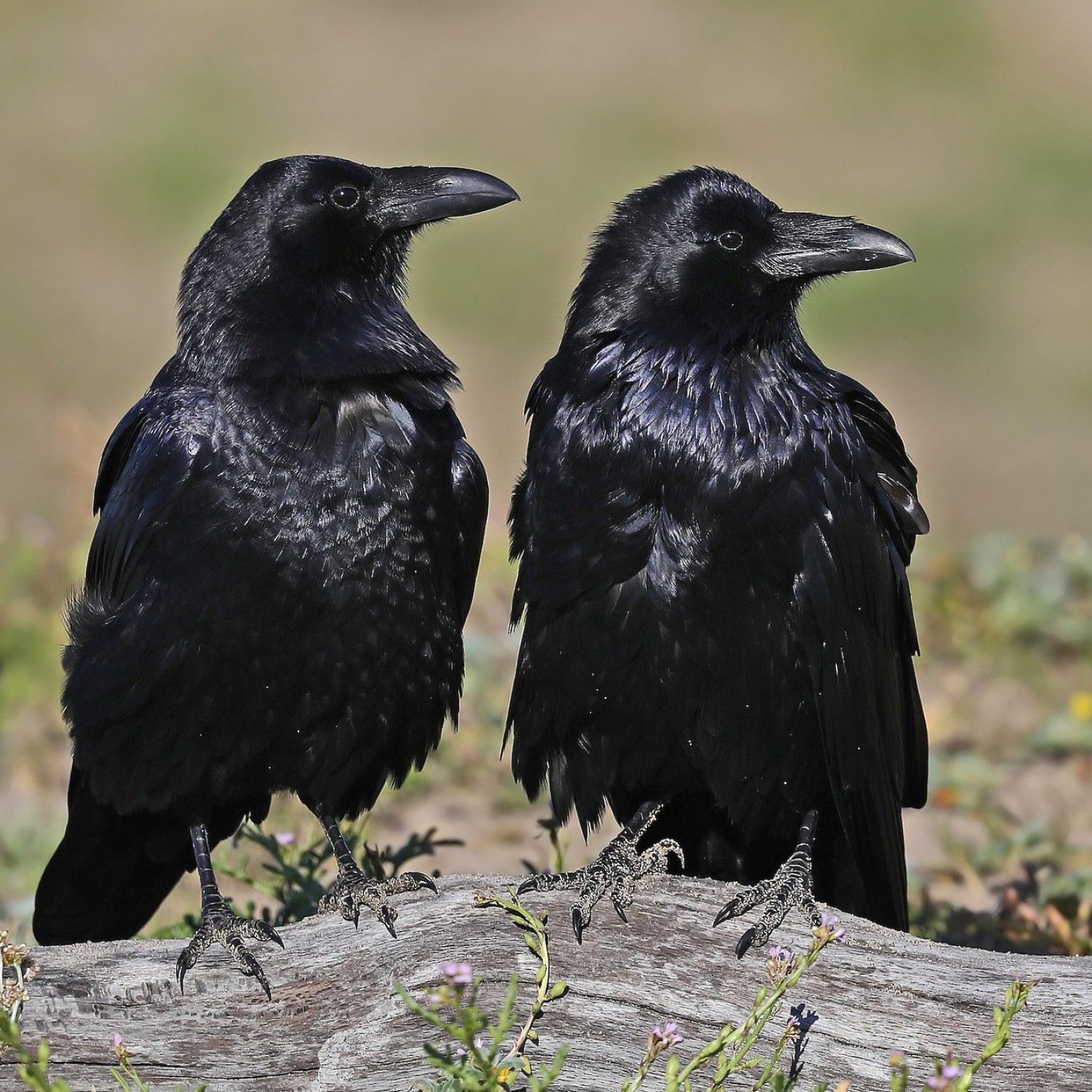
Common Raven
52-69 cm (20-27 inches)
The common raven, found in various locations, is a large and sturdy bird with a body length of 52-69 cm (20-27 inches). Part of the Corvidae family, these intelligent birds are known for their black plumage and loud croaking calls. Keep an eye out for this majestic creature on your next outdoor adventure! #commonraven #corvidae #outdooradventures
Animal Details Summary:
Common Name: Common Raven
Kingdom: Animalia
Habitat: Forests, mountains, coastal areas, deserts
Ravens: The All-Black Birds with Intelligence and Charm
Black is a color often associated with mystery, darkness, and oftentimes, fear. But in the case of the Common Raven (Corvus corax), its sleek, all-black body exudes a unique kind of charm and intelligence that has captivated humans for centuries. These birds, commonly found in forests, mountains, coastal areas, and even deserts, have a fascinating history that has made them a beloved figure in various cultures and even literature. Let's dive into the intriguing world of ravens and uncover what makes them truly special Common Raven.A Scientific Introduction
But first, let's get to know the Common Raven on a more scientific level. Belonging to the kingdom Animalia, phylum Chordata, and class Aves, ravens are a part of the order Passeriformes, which also includes other birds like crows, jays, and magpies. They are part of the family Corvidae, which is known for its intelligent and adaptable members. Ravens have a large, sturdy body shape, measuring 52-69 cm (20-27 inches) in length and weighing between 0.69-2.1 kg (1.5-4.6 lbs.) Ceratosaurus. And as mentioned earlier, they are all-black, with glossy feathers that have a slight blue or purple tint when hit by the light.An Omnivorous Diet
One of the key reasons for the success of ravens is their omnivorous feeding method. These birds have a diverse diet, ranging from insects, fruits, small mammals, to carrion and even garbage. Their sharp beak allows them to break open tough shells and their intelligent mind helps them scavenge for food in diverse environments. Being adaptable and opportunistic eaters, ravens can thrive in various habitats, making them one of the most widely distributed birds in the world.A Global Species
Speaking of distribution, ravens can be found in many parts of the world. They are native to North America, Europe, Asia, and Africa, with different subspecies found in each region. Interestingly, they can also be found in various countries, from Canada and Russia to Morocco and Saudi Arabia. This wide distribution is a testament to their resilience and adaptability to different environments.Icons in Culture and Mythology
Ravens are not just birds with extraordinary physical and behavioral traits; they have also been a source of admiration and even reverence in different cultures and mythologies. In Norse mythology, Odin, the god of wisdom, war, and death, had two ravens, Huginn (thought) and Muninn (memory), who flew around the world to gather information for him. In Greek mythology, ravens were associated with Apollo, the god of prophecy, due to their intelligence and ability to foretell the future.In Native American cultures, the raven is often depicted as a trickster figure, with stories of how they outsmarted bigger and stronger animals to get what they wanted. In ancient Tibetan and Celtic cultures, ravens were often associated with death and the underworld, possibly due to their scavenger nature and fondness for carrion. Despite these negative connotations, ravens were also revered for their intelligence and were often seen as messengers between worlds.
Mating for Life
Ravens are also known for their strong pair-bonding. These birds mate for life and can form strong emotional connections with their partners. Both male and female ravens participate in all aspects of nesting and raising young, from finding food to defending their territory. This partnership has been observed to last for many years, if not their entire lifespan. And interestingly, these monogamous bonds can extend beyond just breeding pairs. Scientists have observed that ravens also have a complex social structure, and sometimes form coalitions with other ravens, resulting in multiple breeding adults in a single nest.Tools and Communication
Another aspect that sets ravens apart from other birds is their ability to use tools. In the wild, they have been observed dropping nuts on the road and then waiting for a car to crack them open. In captivity, they have also been trained to use tools for various tasks, such as retrieving food that is out of reach. This remarkable cognitive ability is also reflected in their communication skills. Ravens have a repertoire of over 25 different vocalizations that they use to communicate with each other, with each sound conveying specific messages and emotions.The Impact of Human Interaction
Despite their adaptability and endurance, ravens have faced several challenges over the years, predominantly due to human activities. One of the biggest threats to their population is habitat loss and fragmentation. As humans continue to encroach on natural areas, ravens are forced to compete with other birds for resources. They are also often seen as pests and are sometimes targeted by humans for being a potential threat to livestock and crops.On a positive note, many efforts are being made to protect and conserve ravens. In some cultures, ravens are recognized as symbols of wisdom, and their presence is seen as a good omen. Conservation organizations are also working towards educating communities about the importance of ravens in maintaining a healthy ecosystem. And with ongoing research and monitoring efforts, we can gain a better understanding of these birds and how to best protect them.
Lifetime Impressions
In conclusion, ravens are truly remarkable creatures. Not only do they have distinctive physical and behavioral traits, but they also hold a significant place in human history, culture, and mythology. Their intelligence, adaptability, and social dynamics make them one of the most intriguing birds, and their all-black appearance only adds to their mystique. From being seen as tricksters and messengers to being symbols of wisdom and adaptability, ravens have captured our attention and admiration for centuries, and will continue to do so for years to come.

Common Raven
Animal Details Common Raven - Scientific Name: Corvus corax
- Category: Animals C
- Scientific Name: Corvus corax
- Common Name: Common Raven
- Kingdom: Animalia
- Phylum: Chordata
- Class: Aves
- Order: Passeriformes
- Family: Corvidae
- Habitat: Forests, mountains, coastal areas, deserts
- Feeding Method: Omnivorous
- Geographical Distribution: North America, Europe, Asia, Africa
- Country of Origin: Various countries
- Location: Various locations
- Animal Coloration: Black
- Body Shape: Large, sturdy
- Length: 52-69 cm (20-27 inches)
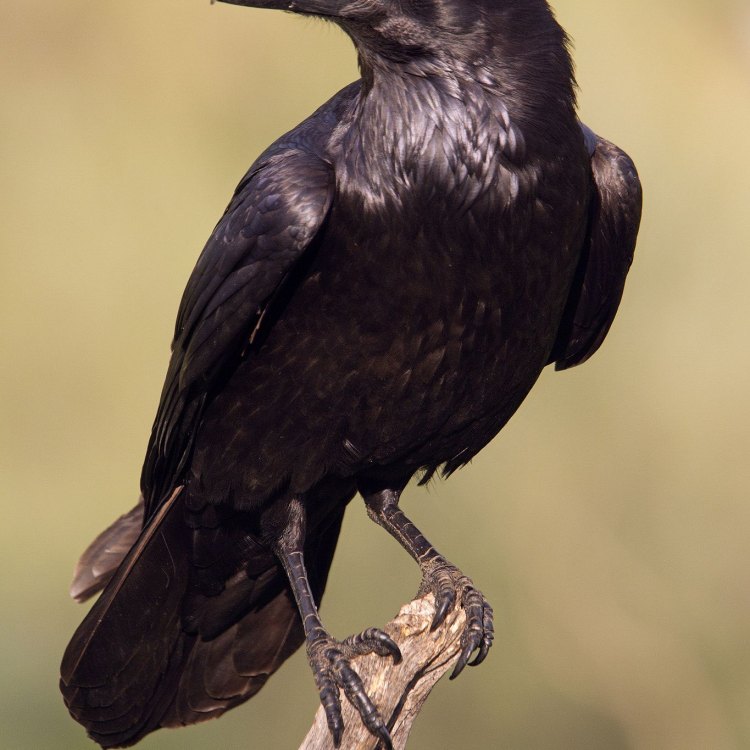
Common Raven
- Adult Size: Large
- Average Lifespan: 10-15 years in the wild, up to 40 years in captivity
- Reproduction: Sexual
- Reproductive Behavior: Monogamous
- Sound or Call: Deep croaking and harsh calls
- Migration Pattern: Migratory, but some populations are sedentary
- Social Groups: Pairs or small family groups
- Behavior: Intelligent, curious, playful
- Threats: Habitat loss, persecution by humans
- Conservation Status: Least Concern
- Impact on Ecosystem: Scavengers, seed dispersers, predators
- Human Use: Folklore, literature, spiritual beliefs
- Distinctive Features: Large size, shaggy throat feathers (hackles), wedge-shaped tail
- Interesting Facts: Highly intelligent and cunning, known for their problem-solving abilities
- Predator: Large birds of prey, raccoons, wolves
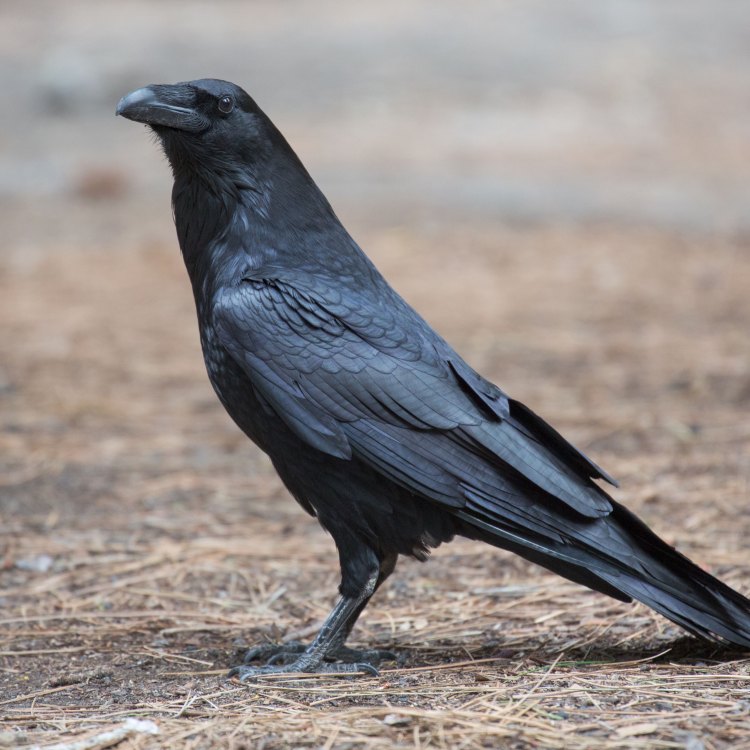
Corvus corax
The Intelligent and Mysterious Common Raven: A Fascinating Creature with a Rich History
The Common Raven, also known as the Northern Raven, is a large and majestic bird that can be found in various parts of the world. Known for their large size and distinctive features, these birds have captured the imagination of humans for centuries. With their deep croaking calls and intelligent behavior, they have been the subject of folklore, literature, and even spiritual beliefs.But what makes the Common Raven so unique? In this article, we will delve into the world of this mysterious and fascinating creature, exploring its adult size, reproduction, behavior, threats, and its impact on the ecosystem PeaceOfAnimals.Com. So, let’s take a closer look at one of the most fascinating creatures in the avian world.
Adult Size and Average Lifespan
The Common Raven is a large bird, with an average length of 22-27 inches and a wingspan of up to 4 feet. They can weigh anywhere between 2-3 pounds, making them one of the largest passerine birds (perching birds) in the world. But despite their size, these birds are agile and graceful in flight, with their long, wedge-shaped tails guiding them through the air.
In terms of lifespan, Common Ravens have an average lifespan of 10-15 years in the wild. However, in captivity, they have been known to live up to 40 years. This vast difference in lifespan can be attributed to the fact that in the wild, these birds face numerous threats, including predators and human interference. But in captivity, they are well-protected and cared for, allowing them to live much longer lives.
Reproduction and Reproductive Behavior
Common Ravens are sexual, meaning they reproduce through male-female mating Chickadee. These birds are also known to be monogamous, forming pairs that will last for their entire reproductive life. They will typically lay 3-7 eggs in a single clutch, with both parents participating in the incubation process.
Once hatched, the chicks are cared for and protected by both parents. They will leave the nest after 6-7 weeks and are fully fledged by 10-12 weeks. Interestingly, Common Ravens have a unique behavior of playing and engaging in mock fights with each other, even as adults. This playful behavior is believed to play a role in strengthening the bond between the pair.
Sound or Call
One of the most distinctive features of the Common Raven is its deep croaking and harsh calls. These sounds are typically used for communication within a pair or small family group. It is also not uncommon to hear a group of ravens vocalizing in unison, creating a chorus of sounds that can be heard for miles.
These vocalizations are not only used for communication but also play a role in establishing territories and attracting mates. With their wide range of sounds, it is believed that Common Ravens have one of the most varied vocal repertoires among all birds.
Migration Pattern and Social Groups
Common Ravens are migratory birds, meaning they travel to different areas depending on the season. However, some populations are sedentary, meaning they do not migrate and stay in the same area throughout the year. These sedentary populations are mostly found in colder regions, where food is more readily available in the winter months.
In terms of social groups, Common Ravens are typically found in pairs or small family groups. These birds form strong bonds with their mates and are known to stay in pairs for their entire reproductive life. They are also highly intelligent birds, capable of forming complex social structures, where they cooperate and work together for the benefit of the group.
Behavior and Impact on Ecosystem
The Common Raven is often described as an intelligent and curious bird. They are known for their problem-solving abilities and have even been observed using tools to access food. These birds are also playful and will often engage in acrobatic displays to entertain themselves and their audience.
But apart from their intelligence and entertaining behavior, Common Ravens play a crucial role in the ecosystem. As scavengers, they help to keep the environment clean by feeding on carrion. They are also seed dispersers, as they feed on fruits and berries, transporting seeds to new areas. And as predators, they help to control the populations of smaller animals, such as rodents, preventing them from overpopulating and damaging the ecosystem.
Threats and Conservation Status
Despite their intelligence and vital role in the ecosystem, Common Ravens face numerous threats, the most significant being habitat loss and persecution by humans. As humans continue to encroach on their territory, Common Ravens are losing their homes and food sources, forcing them to adapt to new environments or face starvation.
But perhaps the most significant threat comes from humans who perceive Common Ravens as pests. These birds are often persecuted in areas where they are believed to prey on livestock, although there is little evidence to support this claim. In some areas, they are also hunted for their feathers, which are used in traditional crafts.
Thankfully, the Common Raven is not considered a vulnerable species, and their conservation status is listed as Least Concern by the IUCN Red List. However, continued human interference and loss of habitat could have a severe impact on their population in the future.
Human Use and Interesting Facts
Throughout history, humans have been fascinated by the Common Raven, and these birds have played a significant role in many cultures. They have been featured in folklore, literature, and spiritual beliefs in various parts of the world. They have been depicted as tricksters, wise creatures, and even omens of death, showcasing the mysterious and captivating nature of these birds.
Apart from their cultural significance, Common Ravens are also known for their intelligence and cunning. They are highly adaptable birds, capable of thriving in various environments and finding creative solutions to survive. They have even been known to mimic human speech, making them a favorite among bird enthusiasts.
Predators
As scavengers and predators, Common Ravens face threats from other animals. The most significant of these are large birds of prey, such as eagles, hawks, and owls, who will often prey on young ravens. Raccoons and wolves have also been observed to prey on Common Ravens, especially during the nesting season.
In Conclusion
The Common Raven is a truly remarkable creature. With its large size, distinctive features, and intelligent behavior, it has captured the fascination of humans for centuries. But beyond its mysterious nature and cultural significance, these birds play a crucial role in the ecosystem, making them a vital part of our natural world.
As we continue to learn more about these fascinating creatures, we must also make a conscious effort to protect them and their habitat. By understanding and appreciating the unique features and behaviors of the Common Raven, we can ensure the survival of this magnificent bird for generations to come.
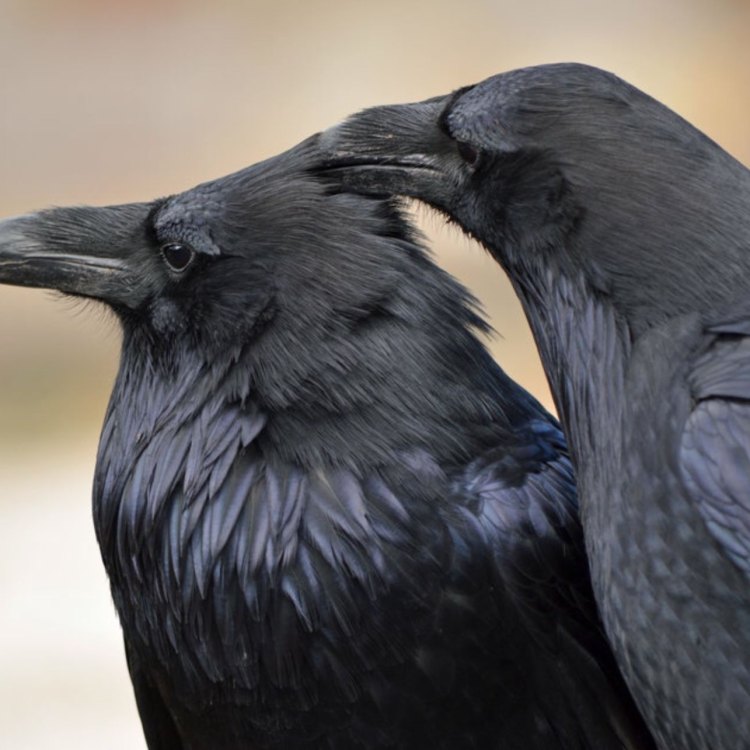
Ravens: The All-Black Birds with Intelligence and Charm
Disclaimer: The content provided is for informational purposes only. We cannot guarantee the accuracy of the information on this page 100%. All information provided here may change without prior notice.


